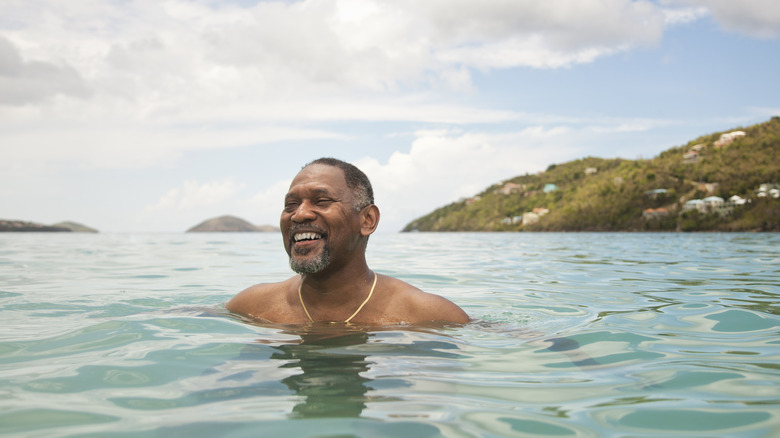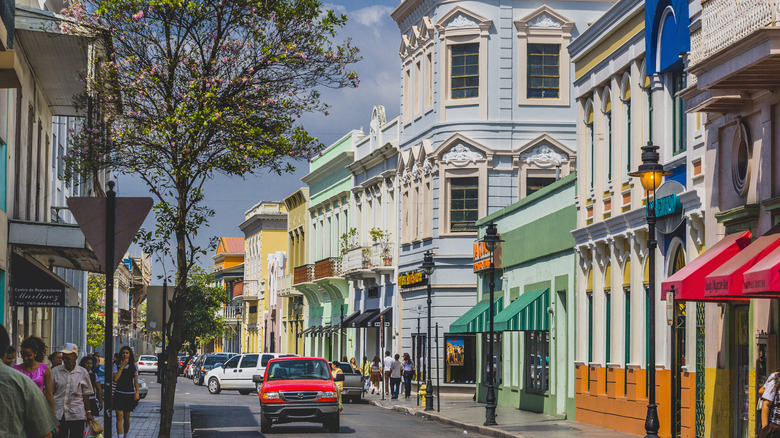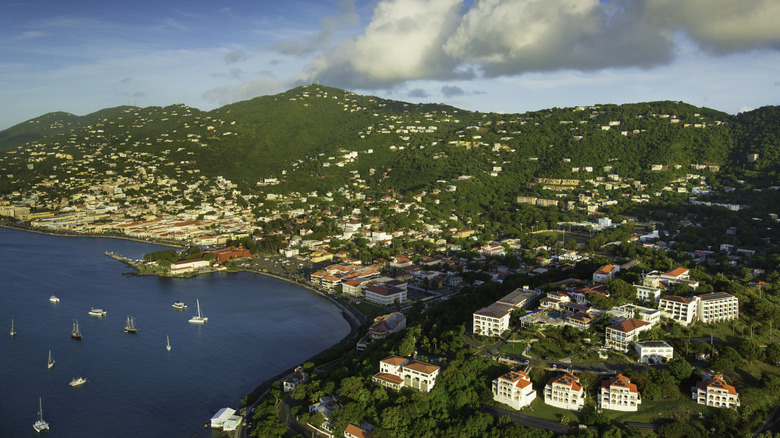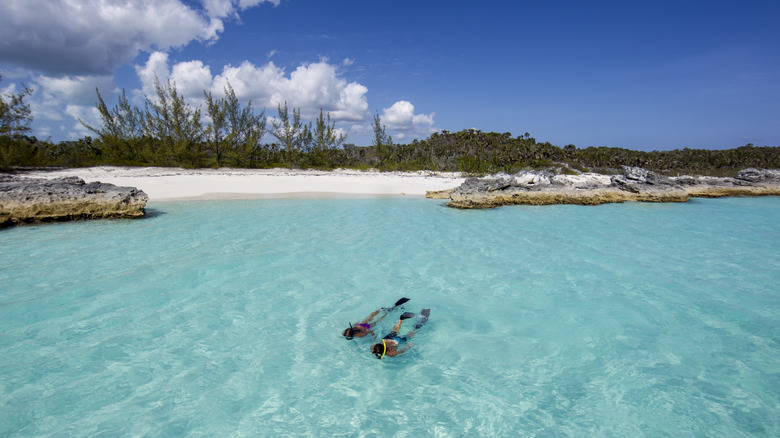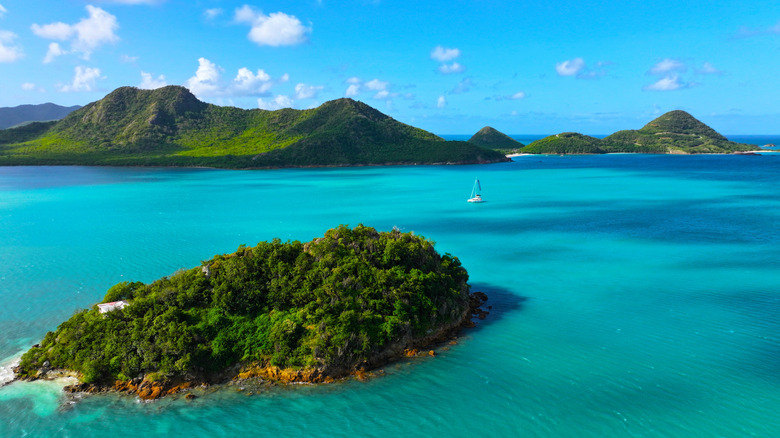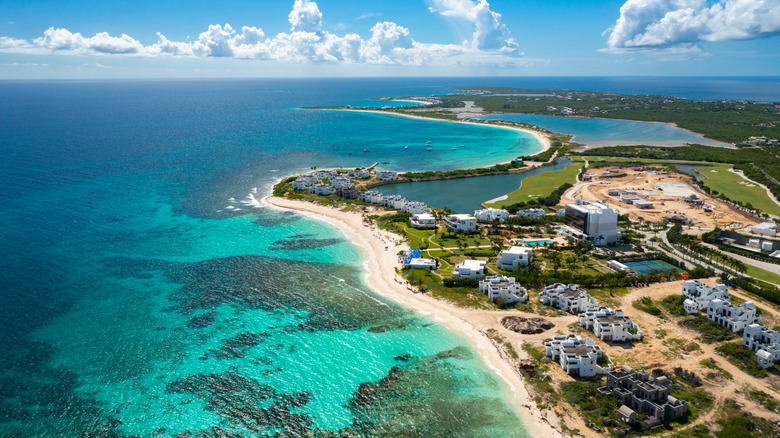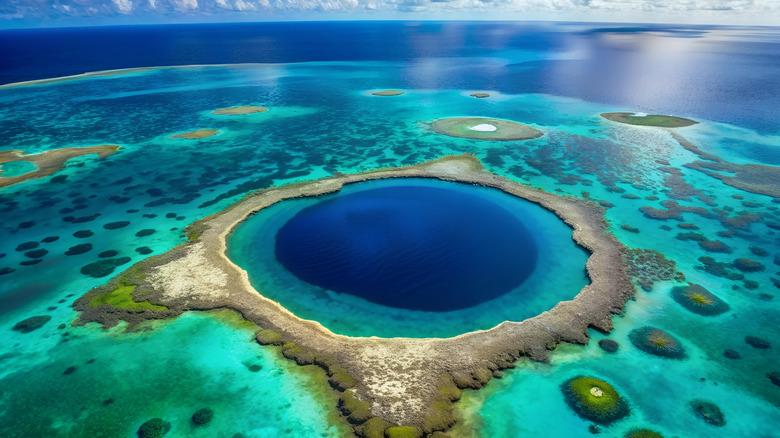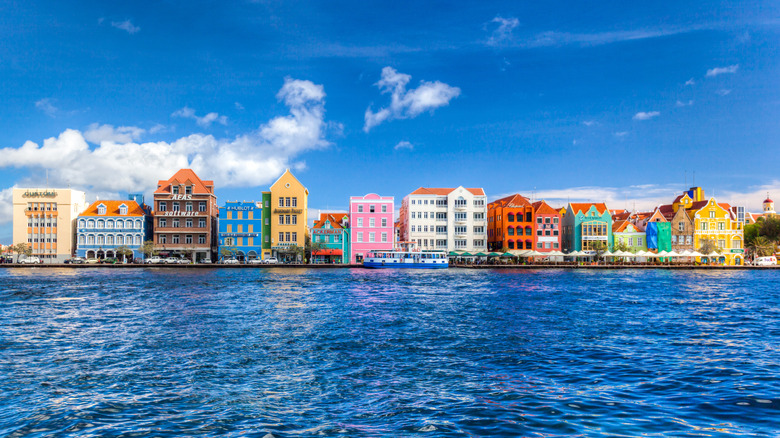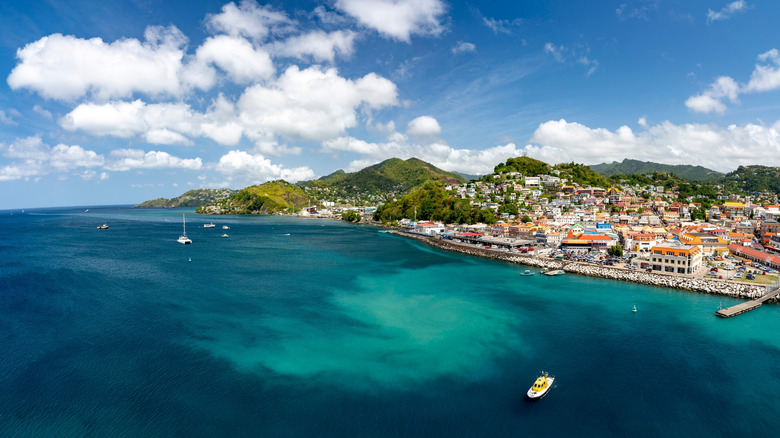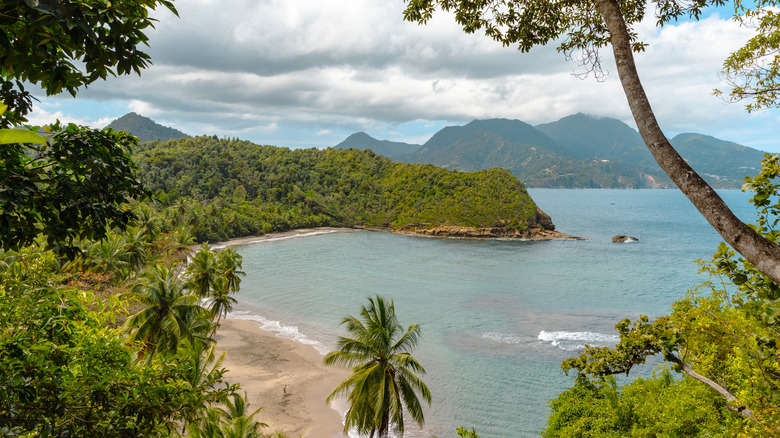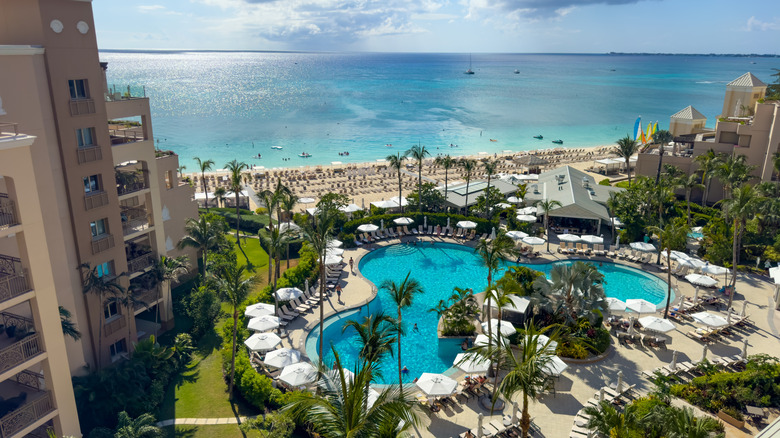The Ultimate Guide To The Best Caribbean Islands For Retiring
Retirement isn't the end but rather a brand new beginning. Millions of people around the world work hard every day to put food on the table and sock away a few extra bucks to fund their golden years. With a solid savings strategy and enough time (coupled with a bit of help from programs like 401(k) matches and Social Security checks), many Americans will find that retirement isn't a fearsome monolith but an achievable dream.
The project of replacing your working income is even more attainable if you move when you reach retirement age. Many people who've spent their whole lives up north relocate to coastal communities like Florida, Texas, or even Arizona (a state with some of the best swimming lakes in the West). But moving even farther afield can be extremely rewarding. Getting out of the country affords you the opportunity to explore a brand-new community. In many cases, it can drastically reduce your cost of living, making your dollar stretch even further.
The Caribbean is a wonderful place to retire for these and numerous other reasons. Close to half a million Americans call someplace else home in retirement, and tens of thousands of those retirees choose Caribbean destinations for their proximity to home, laid-back island lifestyles, and more. These are some of the best islands to consider if you're looking for a tropical destination that's not far away but still offers a tremendous life of leisure.
Puerto Rico offers many of the familiar features of home
Puerto Rico is a uniquely favorable starting point. The island features a population of diversity in terms of cultural makeup and age demographics, with 18% of the population being over 65 years. Retirees moving from the mainland will find plenty of opportunities to make friends as a result. It's also important to remember that Puerto Rico is a U.S. territory, and anyone from the island is just as American as someone from Medford or Missoula.
Because Puerto Rico remains within the U.S. sphere of citizenship and administration, benefits like Medicare remain accessible to those living on the island. You'll also be able to take advantage of significant tax breaks by making Puerto Rico your permanent (or primary) home, like a 75% discount on your property taxes and a 4% income tax rate with no capital gains adjustments. Additionally, there are no registration, visa process, or residency hoops to jump through.
A move to Puerto Rico is as simple as packing up and getting on a plane — just as a transition from Hartford to Atlanta would be. Estimates place the cost of living at just over 8% lower than in the continental United States, making it cheaper by a notable mark, too. A short hop from Miami and beyond, Puerto Rico is a tropical haven that delivers much of the same experience as a traditional American retirement with an island flair.
The U.S. Virgin Islands provide a similar experience with numerous options
The Virgin Islands are found just east of Puerto Rico and include British and American island territories. The U.S. Virgin Islands comprise three main islands (St. Thomas, St. John, and St. Croix) and a smattering of smaller hamlets peppered amongst the tropical waves. Like Puerto Rico, roughly 16% of its people (with a population of just over 100,000) are over 65. It's another U.S. territory, making the shores of the islands a retirement destination that requires no visa or residency planning.
Each of the three main islands offers something unique to those looking for a change of pace. St. John is a wonderful destination for those who prioritize getting out in nature, while St. Croix features a vibrant town lifestyle. Medicare remains accessible here, and duty-free shopping is available throughout the islands, making it a beneficial financial choice.
Unlike Puerto Rico, the cost of living here is slightly elevated over the mainland experience, but property tax is essentially zero, and there is no sales tax on the islands. The landscape is tremendously close to the United States, as well. Frequent flights to and from the islands maintain connections to hubs around the country for those who might want to make the Caribbean a seasonal home rather than a permanent one.
The Bahamas: tax advantages, clear blue water, and close proximity
The Bahamas is separated from the Caribbean by the Cuban landmass, but it remains within the conversation surrounding islands that work their way down from North to South America. Scattered across the Atlantic coast of Florida and seemingly tumbling down toward Cuba and the Dominican Republic, the Bahamas is somewhat shielded by the surrounding landmasses. These protect the island country against the worst of hurricane season, with the most intense storms frequently drawing tremendous strength from the warm sea and gulf waters after leaving the ocean tides behind. Also, because of its location, the islands take fewer direct hits from storm winds than other landmasses in the region.
The islands that make up the Bahamas are very close to the Southeastern coastline of Florida. This makes it a great option for avid boaters who might consider ferrying themselves back and forth from time to time. The island chain is home to a truly mystifying array of marine life and reef activity. Therefore, it is a wonderful destination for retirees who want to enjoy an adventurous lifestyle that features water sports (although keeping some of the dangers of snorkeling and scuba diving in mind is important).
The islands are the first on this list to represent a foreign country, and as such, you'll be leaving the tax and residency jurisdiction of the United States behind. Fortunately, you can gain permanent residency by purchasing a home worth at least $500,000 and then enjoy no personal income, capital gains, or inheritance taxes.
Antigua and Barbuda: inexpensive path to citizenship in the heart of Caribbean island hopping
Antigua and Barbuda lie in the Lesser Antilles island chain, at the top of the larger southward bend across the eastern edge of the Caribbean. The country comprises two large islands and a few smaller landmasses that dot this part of the sea. Like many other Caribbean destinations, buying your way into residency is part of the conversation.
However, Antigua and Barbuda go beyond simple residency and make citizenship available for those who make a $200,000 investment in the country's real estate. Buying a relatively inexpensive property to call your new home can make the island community a permanent fixture of your long-term plans. This is a much lower barrier to entry than some others, like the Bahamas, and can, therefore, offer a realistic retirement option for a larger cross-section of the American public.
The island nation features many of the typical amenities that a retiree will be seeking, too. The community speaks English and is home to less than 100,000 people. There's quality access to international destinations, including the U.S., the U.K., and Europe. Healthcare is also noted at a high standard here, making it a reliable place for those who may need to consider additional health requirements in their planning. The cost of living is also a major plus for retirees. It's estimated that a single person can live on a budget of only $1,100 per month, plus rent or mortgage payments (if necessary).
The Dominican Republic: dirt cheap living and divine sea air
The Dominican Republic (DR) features one of the most vibrant foreign communities across the entire collection of Caribbean Islands. It is also one of the most cost-effective places to resettle once you leave the workforce. It's possible to fund your lifestyle here on social security checks without any additional retirement income from your savings accounts.
Access to rolling residence visas requires $1,500 per month in pension capital — for instance, from your Social Security checks. The average monthly check as of January 2025 comes out to $1,976, while a somewhat luxurious budget in the DR will run you roughly $2,000 per month. All these features collectively make this a massively inviting island home for those looking for a change of scenery. Flight connections back to the United States can be found in abundance, too.
The island is well-connected, and the community serves as a tremendous pipeline for baseball talent to the Major League level. Those who might otherwise miss their home team will find a new professional outfit to root for and almost certainly have an opportunity to discover talented young players early in their journey to The Show. Outdoor adventure is naturally a major draw, too, with water sports and boating forming a major component of the island's offerings. Spanish is a must, however, in many parts of the Dominican Republic, so that may curtail the plans of some hopefuls.
Anguilla: tremendous sunshine and another tax-favorable destination
Yet another island nation without income taxes, VAT, or capital gains tax. It's one of the sunniest and driest options in the region and a massively underrated Caribbean destination for water adventures. These traits make it a solid choice for those who want to maximize their beach adventures and daylight hours. Anguilla isn't particularly blessed with a heap of shopping options. However, its close neighbor Saint-Martin (and Sint Maarten on the southern end of this shared island) is just a 20 minute ferry away and offers expanded marketplace opportunities.
Anguilla also doesn't have huge connectivity to the United States through air routes. But it does offer something that most other Caribbean nations can't provide. The island is part of the British Overseas Territories. So, five years spent here as a permanent resident offers you the opportunity to become a British Overseas Territory Citizen, making you eligible to become a full British citizen. For those planning far ahead, a sort of "temporary permanence" in Anguilla might create the possibility of a relatively simple retirement in hip and happening London or the peace and quiet (or wild walking trails) of the Welsh countryside.
Belize: a delightful mix of mainland amenities and island living
Some of the most spectacular water features anywhere in the world make Belize their home. This includes "The Great Blue Hole," one of the most spectacular and dangerous dive sites in the world. The country is best known as a mainland territory beneath Mexico's Yucatan Peninsula (and just next door to some of Guatemala's most breathtaking Mayan treasures in Tikal). However, a number of crucial islands also belong to the Central American nation. It might also be surprising to some that Belize is filled with English speakers, and U.S. Dollars are accepted virtually everywhere. Belize is also a magnetic destination for avid golfers looking to explore a wealth of challenging and beautifully curated courses in their leisure years.
Some of the most prominent retirement destinations in Belize are on its islands. Ambergris Caye and Caye Caulker are two of the most prominent, and people living here typically trade in their cars and fast-paced lifestyle for walks on the beach, cruises on golf carts, and a truly laid-back existence that's refreshingly simple and relaxing. Belize makes it fairly simple to retire on its shores, too. The Qualified Retirement Program requires you to spend 30 days a year in Belize and deposit $2,000 per month in a local bank — perhaps funded with your Social Security checks. There's no need to buy property or make other significant investments.
Curaçao: a southern hamlet tucked away from hurricane season
Like Aruba and Bonaire, the island of Curaçao is just off the Venezuelan coast of South America. It's a part of the Kingdom of the Netherlands and a great place to settle in retirement for a variety of reasons. The island is part of the Lesser Antilles chain of landmasses that stretch down from North America. Nevertheless, it's positioned so low that its shores are well-protected against hurricane force winds that threaten the neighborhood every summer and fall.
The cost of living is lower than many of the surrounding island nations, and retirees can gain access to long-term residency with ease. Retirement income may be taxed here at 10% (of worldwide income), which is a definitive dampener on the conditions compared to other island options. However, the standard of living is quite good compared to the expenses you're likely to encounter.
There are no restrictions on foreigners purchasing property. Outdoor activities are, of course, the norm. Curaçao is known for its underwater beauty, boating, and other water sports, and it also hosts plenty of great golf courses. Also, like Anguilla, because the country is still a part of European territorial possession, living here for five years provides a resident the opportunity to gain citizenship of the imperial nation — in this case, the Netherlands, a member state in the EU.
Grenada: rapid path to citizenship and a welcoming Caribbean community
Grenada offers an affordable cost of living with a comfortable lifestyle, demanding a budget of roughly $2,500 per month at the top end. The island community is welcoming and friendly and is known as one of the safest islands in the region. The Citizenship by Investment program allows retirees to purchase a pre-approved real estate property worth at least $350,000 and gain citizenship in less than a year. This takes the stress out of applying for residence permits or extending visas, allowing you to kick back and enjoy your retirement early in these leisure years.
Tax incentives are also very attractive here. There's no capital gains tax or income tax on global assets for foreign investors and citizens, making it a great place to protect the value of your retirement portfolio in more ways than one. Granada is an island that's home to diverse environmental treasures, too. The island features jungle landscapes as well as a stunning blue seascape. Life can be laid back and relaxing here or filled with adventure, depending on your desires.
Dominica: a place aptly dubbed 'Nature Island' that features tremendous buying power
Dominica is not a component of the Dominican Republic, even though their names are sonically similar. It's a small hamlet between St. Lucia, Antigua, and Barbuda in the Windward Island chain. The island is renowned for its natural beauty and numerous tropical forest and parkland landscapes. Of course, the island is also surrounded by shimmering waters that remain comfortable to swim in all year. The country utilizes the Eastern Caribbean Dollar, a currency deployed in a number of other local islands, and features a value pegged to the dollar. This means it won't see any fluctuations as you live out your days in comfort and relaxation.
The country doesn't impose capital gains or foreign income taxes, allowing you to eliminate this concern from your financial plans. Retirees hoping to settle here can gain citizenship by making an approved real estate purchase of at least $200,000 or donating that amount to the country's Economic Diversification Fund. This allows you to remain as a permanent resident of the island. Year-long temporary residence permits are also an option for those seeking to rent a place to live in the Caribbean. Through either route, this island is one of the most cost-effective choices in the Caribbean and, therefore, offers access to retirees from a range of financial backgrounds.
The Cayman Islands: living a life of luxury in the heart of the Caribbean
Last on this list is a landscape of luxury. Tucked beneath the Cuban shores lies the Cayman Islands. Long known as a tax haven for the world's wealthiest, the trio of islands should perhaps instead be famed for their immense scuba diving opportunities, golf courses, and vibrant retirement lifestyle. The Caymans are a self-governing British Overseas Territory, meaning there's a pathway to U.K. citizenship potentially nestled within the decision to make a life here, too.
The population of the islands features an 8.3% rate of people over 65, suggesting that many have targeted this community as a landing spot after they leave the workforce. There's no income tax, capital gains, or real estate taxes to be concerned with in the Caymans, and foreign buyers won't face any restrictions as they peruse the real estate marketplace looking for their next home. The lifestyle here may just be the most elegant of any Caribbean island, and with that comes a sort of pricing premium, though.
To gain long-term residency through a real estate investment on Grand Cayman, you'll need to buy a property worth at least CI$500,000 (roughly $600,000). Other avenues that cover business investments and other options will exhibit even higher thresholds. You'll also need to prove an ongoing source of annual income for most residency certificates, and estimates place the typical budget to live a quality life here at somewhere between $3,500 and $5,000 per month.
